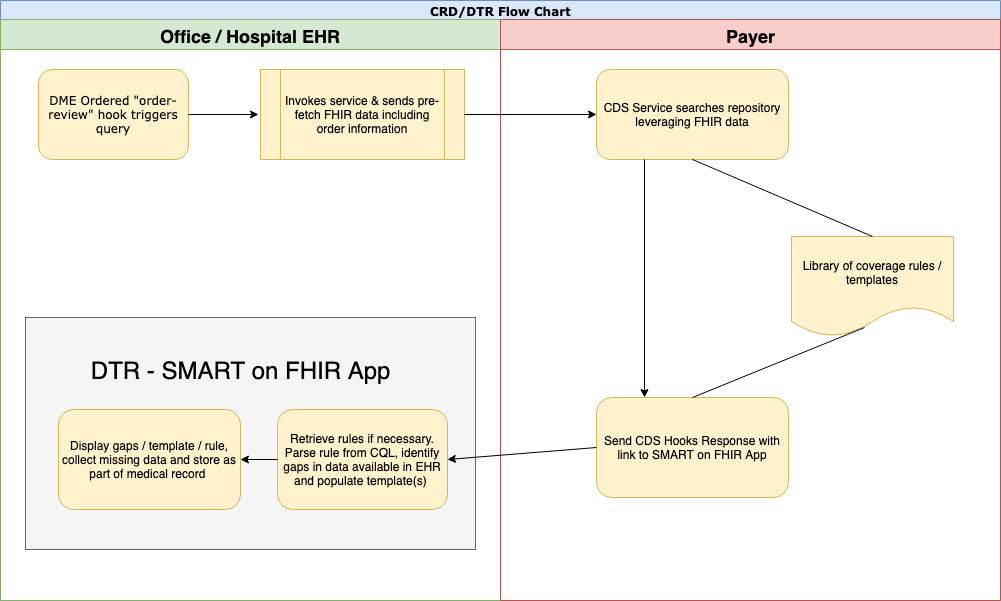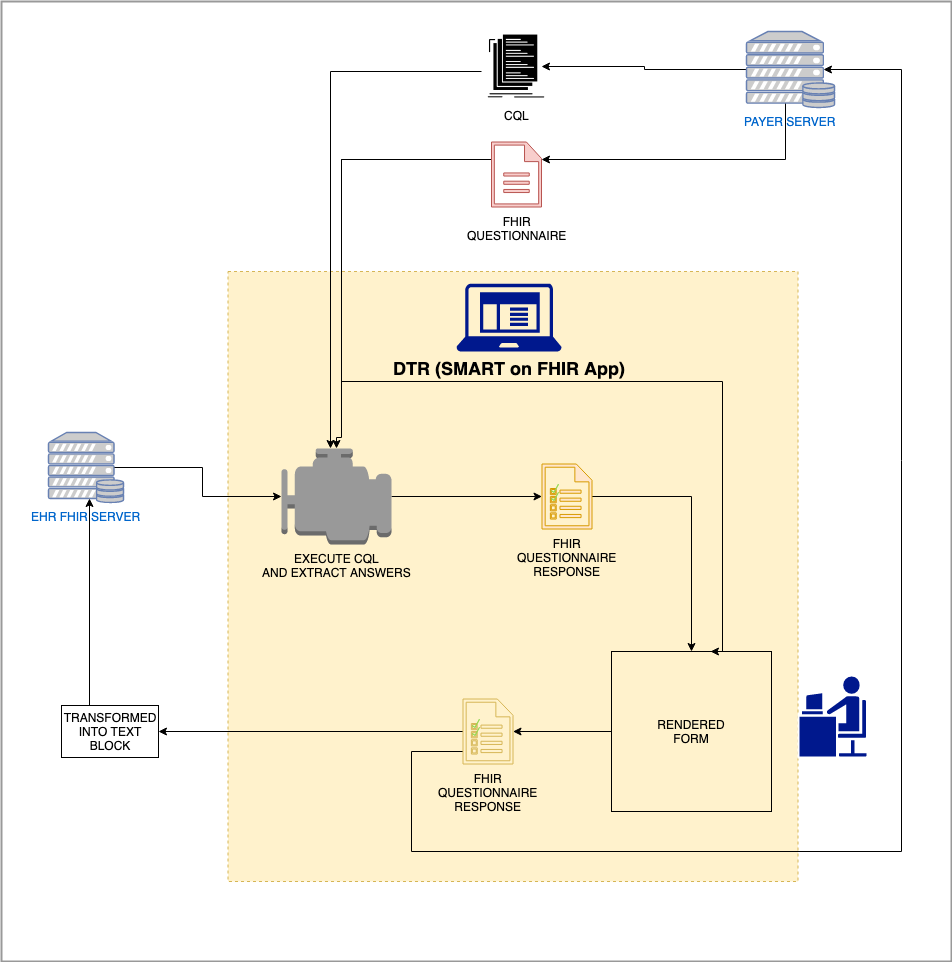This page is part of the Documentation Templates and Rules (v0.2.0: STU 1 Ballot 2) based on FHIR R4. The current version which supercedes this version is 1.0.0. For a full list of available versions, see the Directory of published versions 
A Payer is a person or company who pays for the service of providers. The majority of payers here are also referred to as insurance companies.
The payer IT system shall be the primary system responding to DTR queries.
A healthcare provider organization contains medical providers such as hospitals, doctors, etc.
The Electronic Medical Record (EMR) system shall be the primary system used to initiate the DTR process. The Substitutable Medical Applications, Reusable Technologies (SMART) on FHIR app will typically be initiated from within the EMR.
The goal of DTR is to collect clinical documentation and/or to encourage the completion of documentation that demonstrates medical necessity for ordered items, it is focused on the clinical documentation effort and not the administrative process.
It is possible to have a process where the focus is on the interaction with the EMR via an external application(s). Examples of external systems are administrative, payment, practice management, scheduling, and other applications.
If information is not available to the SMART on FHIR application, then the application will need to prompt the provider to enter the missing information. Ultimately, the solution is to provide greater integration (including possibly FHIR APIs) between the EMR and other supporting applications. (Quality measures may also require this type of integration)
If Electronic Health Record (EHR) is used in this IG it should be considered synonymous to EMR.
Within Documentation Templates and Rules (DTR) the SMART on FHIR app is considered a key component because of the inherent nature of SMART on FHIR apps, namely the ability to call into backend systems such as payers using the SMART launch protocol and FHIR as well as the ability to run rules such as Clinical Quality Language (CQL). This functionality will enable DTR to gather documents and templates, retrieve FHIR resources from EMRs, and run rules to reduce the time involved in the Documentation Requirements Lookup Service (DRLS) process.
Users or Providers are challenged to deal with the diversity of administrative and clinical requirements that impact documenting the need for treatment and selecting the appropriate best path for care. The current environment is made more complex by the large number of payer-based requirements that must be met to document that covered services and devices are medically necessary and appropriate.
The goal of this use case is to reduce user or provider burden and simplify processes by establishing electronic versions of administrative and clinical requirements that can become part of the provider’s daily workflow.
Coverage Requirements Discovery (CRD) addresses the bulleted items below with some DTR overlap:
DTR differs from CRD mostly in its ability to run rules and auto fill forms and templates. The CRD portion of the full workflow might be responsible for verifying with the payer that a given device request requires documentation, and then consolidating the necessary links for the DTR app to be run. In most cases, the CRD application would return a CDS hooks card populated with a SMART launch link for the DTR app, a link to a questionnaire resource, and a device request resource ID. While CRD may verify that documentation rules are required, it does not involve any actual authorization or validation of the rule. The DTR app is responsible for taking the provided rule and checking if available EHR data satisfies the requirements, as well as allowing manual population of missing data.
This shows a high-level overview of CRD and DTR (DTR is the SMART on FHIR App)

This shows an overview of how the SMART on FHIR App fits into the flow when ordering oxygen therapy.
Note: There is no need for the user to see the form if it can be auto-completed unless they need to approve sending the result to the payer or to “sign” the information prior to submission.
If the resulting information is to be sent to a third party (e.g. payer). The DTR / SMART on FHIR App should include a step requiring the provider to grant permission to send along the information gathered in the form before sending. However this should be configurable on a site or provider basis.
Note: DTR is not intended to change orders, only to gather documentation related to a specific service and where it is incomplete, provide the ability to capture the additional documentation required.
